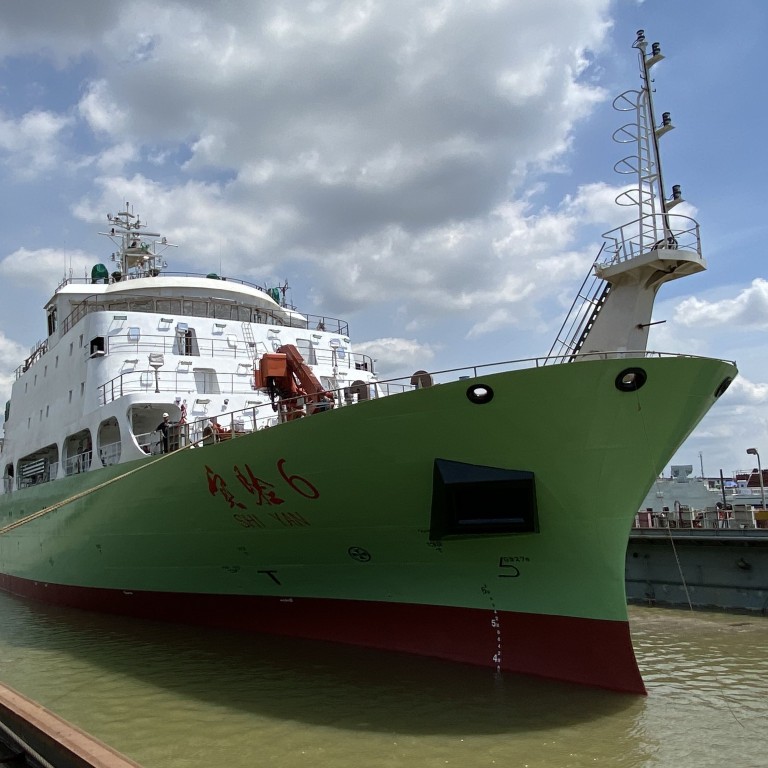
Chinese research ship on maiden voyage to South China Sea amid distrust by neighbours
- The Shiyan 6 geophysical and seismic survey ship left Guangzhou on Monday for assignment in the estuary of the Pearl River and northern South China Sea
- The ship will improve China’s ability to develop resources and safeguard national sovereignty and maritime rights and interests, according to state media
Construction started on the Shiyan 6 in November 2018 and the vessel is now reported to be the most advanced medium-sized research ship in China, its on-board laboratories allowing researchers to process and analyse samples and send data to colleagues on land via satellite.
Hailed as “the main force in China’s scientific research fleet in the South China Sea and its adjacent waters”, the launch of the ship would improve China’s capacity to develop marine resources, oil, gas, minerals and biogenetic resources to safeguard national sovereignty and maritime rights and interests, CGTN reported.
China demands foreign ships report before entering ‘its territorial waters’
With a total investment of 500 million yuan (US$77 million), the vessel can carry a crew of up to 60, has a displacement of 3,990 tonnes and can spend up to 60 days at sea, covering some 12,000 nautical miles.
It can also carry out research offshore and in waters near small islands and reefs in the South China Sea and can be used to collect data on topography, landforms, currents, and biomes in extreme environments such as deep trenches.
Since President Xi Jinping took power in 2012, Beijing has invested heavily in maritime research as part of efforts to achieve a “great rejuvenation” of the country.
In March, a company affiliated with China Shipbuilding Group announced it had sealed an agreement with the Guangdong Institute of Intelligent Unmanned System to build a research vessel the would be “China’s most powerful integrated marine scientific research vessel”.
While Beijing insists that such research will be used for public good, its maritime research activities have been greeted with suspicion from its South China Sea neighbours. China’s claims in 90 per cent of the waters have been contested by Southeast Asian countries, including Vietnam, the Philippines and Malaysia.
What are rival claimants building on South China Sea islands and reefs?
The Vietnamese foreign ministry protested, saying any scientific research activities in the disputed waters without Vietnam’s permission were illegal.
Tensions over China’s survey activities grew in 2019 when one of its research ships, the Haiyang Dizhi 8, was sent into waters near the Vietnamese-controlled Vanguard Bank in the Spratly Islands – known in China as the Nansha Islands – in the South China Sea, triggering a months-long stand-off between the coastguards of China and Vietnam.

